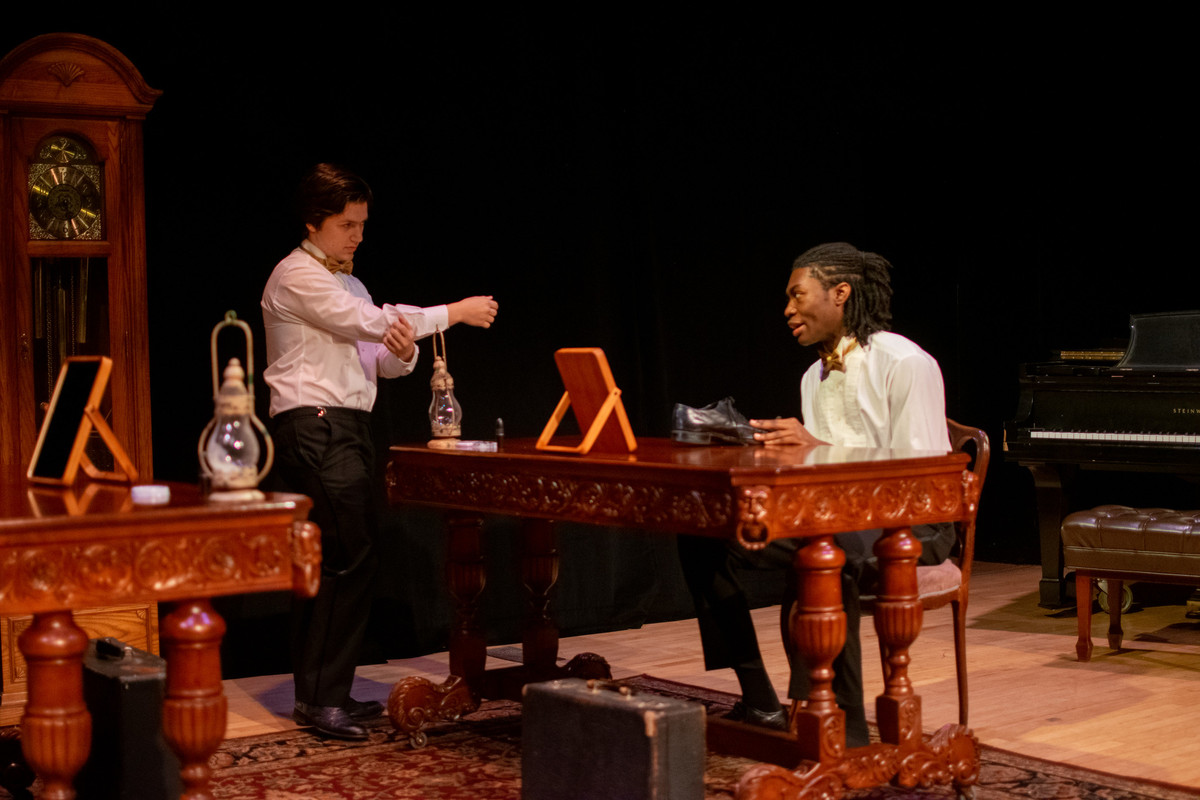Student play “Juba, or Jump!” performed at Saybrook Underbrook
“Juba or Jump!,” a play written and directed by Aaron Magloire ’23, was performed at the Saybrook Underbrook from Dec. 8-10

Courtesy of Melany Perez
An original play juxtaposing historical and contemporary racial injustice in America, written and directed by Aaron Magloire ’23, was performed at the Saybrook Underbrook theater from Dec. 8 to 10.
The play, produced by Sydney Bryant ’23 and featuring Armanti Reed ’23, Julian Hornos Kohl ’23 and Simone Williams ’23, was comprised of two acts — the first was set in 1850 immediately following the passage of the Fugitive Slave Act, while the second was set in the present day. The first act focused on the historical figure of William Henry Lane, also known as Master Juba, a Black performer in the 1850s who toured with a white minstrel group. The second act took place at a modern-day dinner party, underscoring how racist attitudes persist in American culture despite the passage of time.
Magloire said that he first wrote “Juba, or Jump!” for “African American Drama through 1959,” a Yale class that he took in Fall 2021. The play was then presented at the 2022 Yale Playwrights Festival.
“In that class, we learned about William Henry Lane and other Black performers who before Emancipation, and in the decades following, reached levels of success that one wouldn’t necessarily expect,” Magloire said. “And I just thought that was really compelling.”
Lane, played by Reed, was one of the first Black performers to perform in front of white audiences. Although he received extensive praise for his performances as a dancer, his work was neglected in scholarly circles until decades following his death.
According to Magloire, Eric Lott’s book Love & Theft: Blackface Minstrelsy and the American Working Class informed much of the historical background for the play, while Bruce Norris’ play “Clybourne Park,” a 2010 spin-off of Lorraine Hansbury’s 1959 “A Raisin in the Sun,” inspired his structure.
While the three-person cast remained the same between acts, the characters that they played and the dynamics between the characters did not. Even though the two acts are separated by over 150 years, several elements of continuity between the two scenes show the persistence of racial prejudice against Black people in American culture.
“I think that people watching the show should pay attention to the similarities between act one and act two because you’ll find a lot of really, really interesting ways that Aaron has weaved the themes of act one into act two and vice versa,” said Williams.
Magloire added that in addition to including these links in the written script, the actors also brainstormed ways to incorporate these connections between acts through their gestures.
Magloire and Hornos Kohl met in a class his first year, and the two of them were in a play with Williams last year. Magloire then met Reed through a show that they were both involved in last March. Reed said that the play, consisting of only three actors, was the smallest show that he had been involved in, allowing the cast to become close with one another.
“Especially when you’re doing material that’s this heavy, you need to have a strong sense of camaraderie in the room,” Hornos Kohl said.
Magloire stated that initially, he was hesitant to be the director of the play, since he was also the writer. He noted that it was “very difficult” to hear his writing repeatedly read aloud in early rehearsals. However, he said that there was an “inflection point” that occurred during the rehearsal process, after which the show was no longer his, and instead was “in the hands of the actors.”
“I hope they realize how much work went into this,” Reed said. “How much blood, sweat, and tears, if you will … it’s really been such a different theater experience than I’ve ever experienced before.”
The Underbrook is located at 242 Elm St.







